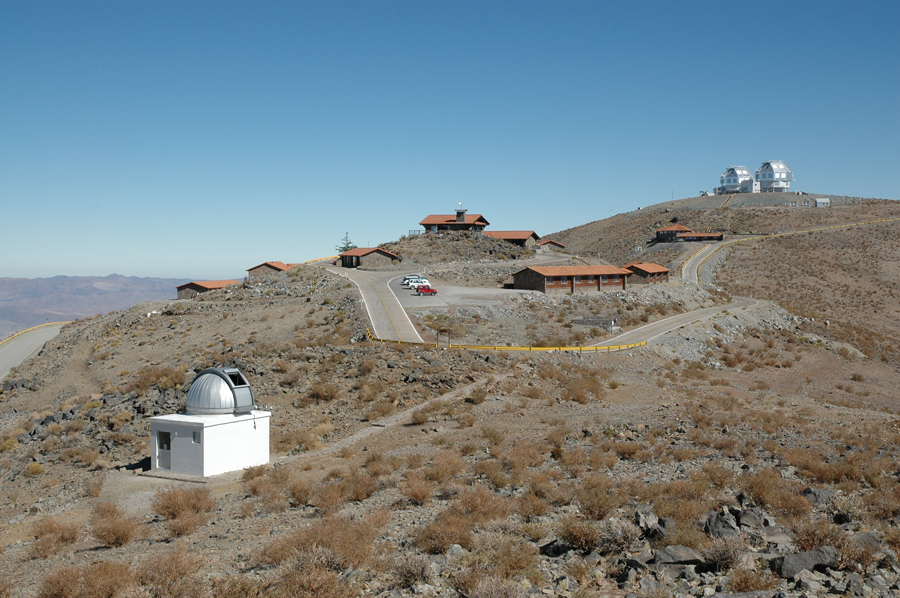
A study of the Sun led by the University of Birmingham using sound waves suggests that the layer in which the significant magnetic activity is located has grown thinner in recent years.
The research was led by the School of Physics and Astronomy at the University of Birmingham and was carried out in collaboration with Yale University in the US, as well as the National Solar Observatory in the US.
Professor Yvonne Elsworth, of the University of Birmingham, is presenting the results of the study - published in the Monthly Notices of the Royal Astronomical Society - today at the National Astronomy Meeting in Hull.
Professor Elsworth said: “The Sun is very much like a musical instrument except that its typical notes are at a very low frequency – some 100,000 times lower than middle C.
“Studying these sound waves, using a technique called helioseismology, enables us to find out what’s going on throughout the Sun’s interior.”
The Sun acts as a natural cavity to trap sound, which is generated by turbulence in the outermost few hundred kilometres of the convection zone.
The University of Birmingham is one of the pioneers in the field of helioseismology and researchers have been using the Birmingham Solar Oscillations Network (BiSON) to study the Sun through sound waves since 1975. The period used covers three of the Sun’s 11-year activity cycles, which see fluctuations in the rate at which energetic particles are created by the interaction between the Sun’s magnetic field and its hot, highly charged outer layers.
The Sun is currently heading towards a period of minimum activity and the team used the full BiSON dataset to try to look for clues in previous cycles as to what might be causing some unusual solar activity observed lately.
Professor Elsworth said: “Recent activity maxima have actually been rather quiet and the last cycle had a long, extended minimum.
“It will be interesting to see if the minimum of this current cycle is extended in the manner of the previous one or if it will soon be back to the conditions of the past.
“However, if it is a normal minimum it will also be interesting to ask why the previous one was unusual.”
The team shows that the interior of the Sun has changed in recent years, and that these changes persist in the current cycle. In combination with theoretical models, the observations suggest that the magnetic field distribution in the outer layers may have become a bit thinner. Other seismic data shows that the rotation rate of the Sun has also undergone some changes in the way the Sun rotates at different latitudes.
Professor Elsworth said: “Again, this is not how it used to be and the rotation rate has slowed a bit at latitudes around about 60 degrees.
“We are not quite sure what the consequences of this will be but it’s clear that we are in unusual times. However, we are beginning to detect some features belonging to the next cycle and we can suggest that the next minimum will be in about two years.”
For further information contact Emma McKinney, Communications Manager (Health Sciences), University of Birmingham, +44 (0) 121 414 6681. For out of hours enquiries email Press Office or please call +44 (0) 7789 921 165.
Or contact Robert Massey, Royal Astronomical Society, +44 (0)7802 877699.
Daily images and videos of the Sun can be found here.
- The University of Birmingham is ranked amongst the world’s top 100 institutions. Its work brings people from across the world to Birmingham, including researchers, teachers and more than 5,000 international students from over 150 countries.
- Howe et al. (2017). ‘The Sun in transition? Persistence of near-surface structural changes through Cycle 24’. Monthly Notices of the Royal Astronomical Society. DOI: 10.1093/mnras/stx1318
- BiSON is funded by the Science and Technology Facilities Council (STFC). This research was carried out with support from the UK Science and Technology Facilities Council (STFC). Funding for the Stellar Astrophysics Centre (SAC) is provided by The Danish National Research Foundation (Grant DNRF106). Support was also given by the National Science Foundation (NSF) grant AST-1514676.
- Running from 2 to 7 July, the RAS National Astronomy Meeting 2017 takes place this year at the University of Hull. NAM 2017 will bring together around 500 space scientists and astronomers to discuss the latest research in their respective fields. The conference is principally sponsored by the Royal Astronomical Society and the Science and Technology Facilities Council.
- The Royal Astronomical Society (RAS), founded in 1820, encourages and promotes the study of astronomy, solar-system science, geophysics and closely related branches of science. The RAS organises scientific meetings, publishes international research and review journals, recognizes outstanding achievements by the award of medals and prizes, maintains an extensive library, supports education through grants and outreach activities and represents UK astronomy nationally and internationally. Its more than 4000 members (Fellows), a third based overseas, include scientific researchers in universities, observatories and laboratories as well as historians of astronomy and others.
- The Science and Technology Facilities Council (STFC) is keeping the UK at the forefront of international science and has a broad science portfolio and works with the academic and industrial communities to share its expertise in materials science, space and ground-based astronomy technologies, laser science, microelectronics, wafer scale manufacturing, particle and nuclear physics, alternative energy production, radio communications and radar.
- STFC's Astronomy and Space Science programme provides support for a wide range of facilities, research groups and individuals in order to investigate some of the highest priority questions in astrophysics, cosmology and solar system science. STFC's astronomy and space science programme is delivered through grant funding for research activities, and also through support of technical activities at STFC's UK Astronomy Technology Centre and RAL Space at the Rutherford Appleton Laboratory. STFC also supports UK astronomy through the international European Southern Observatory.